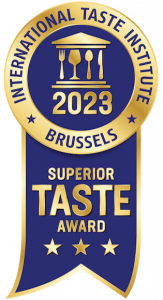What does “Extra” jam mean? And how does it differ from marmalade or jelly?
“Extra” jam:
Has a fruit content of at least 45% (exceptions include black currants and rose hips, for which the fruit content must be at least 35%).
Marmalade:
Marmalade is only made from citrus fruits. Because of the intense flavour of citrus fruits, the minimum fruit content in this case is just 20%. Fruit peel may also be included.
Furthermore, if the fruit content reaches at least 35%, then the product may be called a jam, and it may be labelled an “Extra” jam if it reaches 45%.
Jelly:
In contrast to jam, jelly is only made from juice or concentrated fruit juice. Here, the fruit content allows us to distinguish between jelly and “Extra” jelly.
The products listed must have a total sugar content, i.e. fruit sugars and added sugars, of at least 55%.
The addition of colourings, flavourings and preservatives to jams is prohibited in Germany. The only exceptions are low-sugar products, as they contain less sugar which normally preserves the shelf life of jam.
Fruity spreads:
Fruity spreads are not as strictly regulated with regard to their ingredients. Most have a higher fruit content and a lower overall sugar content.
Although this may look like a positive on first glance, there is also a downside: the lower sugar content means that these products spoil at a much quicker rate, i.e. go mouldy. Unfortunately, mould only becomes detectable when it has developed to an advanced stage.
We find that it is better to add a little more sugar, thereby guaranteeing a “safe” product, than to put our customers at risk of consuming mould in its early stages of growth.



